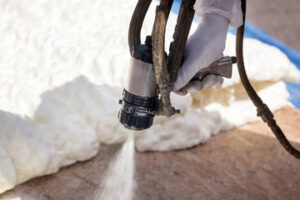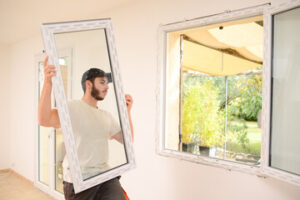Innovations in sustainable Insulation Perth materials are playing a key role as the construction industry shifts to more eco-conscious practices. The benefits of these eco-friendly insulation products include reducing home energy consumption, supporting green buildings, and improving indoor air quality.
Phase Changing Materials (PCMs) absorb and release thermal energy as they melt and freeze, effectively regulating indoor temperatures and eliminating the need for manual heating or cooling.

Aerogels
In the realm of sustainable insulation materials, nothing quite rivals the lightweight and highly insulating properties of aerogels. These spongy-like materials, made up of 99% air, are extremely strong due to their microstructure, where tiny solid strands are interconnected, forming a fractal network that resists compression. Their low thermal conductivity means they are extremely effective at blocking heat transfer, and a minimal thickness is needed to achieve optimal insulation value. Aerogels are also hydrophobic, repelling liquid water and preventing moisture-related damage like mold or rot.
Aerogels are incredibly versatile, and their ability to absorb and retain heat can be utilized in a variety of applications across industries including aerospace, building, energy storage, and beyond. In the construction sector, they could be used to replace conventional insulators such as styrofoam, fiberglass, and spray foam, all of which are typically made from petrochemical-based synthetic substances that demand a staggering amount of energy to produce. Conventional insulators are tough on the environment throughout the production process and continue to inflict harm past their useful lives as they are non-recyclable.
Other green insulation materials such as cellulose, made from recycled paper products and treated to be fire and pest-resistant, can also offer excellent thermal performance and reduced environmental impact. Natural materials such as wool and cork, harvested without harming the trees, are another environmentally friendly option. These natural materials, combined with a draft-proofing strategy such as weather stripping, can significantly reduce home energy use and help to create a more comfortable indoor climate.
A relatively new product to the eco-insulation market, Icynene is a spray foam that expands to fill a cavity and blocks air leaks and drafts. It is a highly efficient insulator and is effective at sealing gaps and cracks, as well as buffering noise between walls in a structure. The main advantage of Icynene is that it contains air bubbles, which have a naturally low thermal conductivity and therefore provide most of the insulative capacity.
With heating and cooling consistently consuming the majority of an average household’s energy usage, it is critical to focus on blocking heat flow with sustainable insulation materials that won’t impose harm on our natural world before, during, or after their lifecycle as insulators. Unfortunately, many builders and retrofitting professionals still choose traditional insulation such as styrofoam, polystyrene, and mineral wool, even though many of these products are based on unnatural synthetic materials that demand an alarming amount of energy to produce.
Bio-Based
Incorporating bio-based insulation materials in construction projects can significantly reduce energy usage, leading to substantial cost savings and a greener future. Bio-based insulation is made from renewable natural materials and uses byproducts of the food industry, which reduces waste and supports a zero-waste philosophy. It also has superior moisture resistance and is easily adaptable to varying climate conditions. Additionally, bio-based insulation is free from any chemicals or additives, making it safer for occupants and the environment.
Ecologically conscious architects and construction firms are increasingly using bio-based insulation materials for their sustainable properties. These materials are derived from agricultural byproducts and other recycled materials, and they require less energy to manufacture than traditional varieties. Bio-based insulation materials are also available in a variety of formats and can be easily used in building construction.
Various bio-based insulation materials are available, including natural cork, cellulose, and fibers from hemp and cotton. They are made from renewable natural resources and are often sourced locally, reducing transportation emissions and carbon footprint. They also have lower GWP and lower VOCs than synthetic polymer insulation materials, and they may be able to meet fire code requirements without the addition of flame retardants.
Bio-based insulation can also be formulated with nanoparticles to improve its performance. This enhances its thermal resistance and helps to prevent the buildup of mold, which can negatively impact a building’s occupants’ health. It can even be infused with smart nanosensors to monitor and manage its performance.
Many organic substances have been proven to be excellent insulators, and some of them can outperform conventional fiberglass or EPS/XPS insulation. For example, natural cork is renewable, recyclable, and offers both acoustic and thermal performance. Similarly, other organic materials, such as olive pits, walnut shells, and apricot stones, can be used to create high-performing bio-based insulation. Bio-based insulation materials are typically granular, which allows them to fill cavities more completely and provide superior acoustic and thermal performance. The granular nature of these products also makes them easier to install in irregularly shaped spaces. They can be mixed with cement or cellulose to create a composite, and they can also be dyed with plant-based pigments to provide a more attractive finish.
Organic
Incorporating eco-friendly insulation materials into your home or commercial building can reduce energy consumption and contribute to a more sustainable future. Innovative technologies such as aerogel insulation, bio-based foams, and phase change materials offer exceptional thermal resistance and lightweight properties, resulting in reduced energy bills and carbon footprints. In addition to environmental benefits, these cutting-edge insulation technologies can improve indoor air quality and help to create healthier living and working spaces.
Traditional insulation materials, such as fiberglass and foam, are typically made from petrochemicals or natural resources processed using high energy consumption, which has negative effects on the environment during production and disposal. These chemicals can release harmful gases into the air, affecting air quality and contributing to climate change. Additionally, certain traditional insulation materials can pose health risks.
However, with the growth of green building practices and increasing demand for eco-friendly insulation solutions, innovations have been developed that use renewable or recycled sources, such as cotton, hemp, and wool. These eco-friendly materials are free from common allergens and have a lower embodied energy than other insulation products.
Eco-friendly insulation also has better moisture resistance and durability, reducing the need for maintenance and improving its performance over time. Some of these innovative materials are in the early stages of development, while others are already available on the market.
Many environmentally conscious insulation solutions also utilize a variety of renewable resources, including recycled materials and agricultural byproducts. For example, cellulose insulation, made from recycled paper products and treated to be fire-resistant and pest-proof, is an excellent choice for green homes and commercial buildings. Similarly, cork insulation is harvested from the bark of cork oak trees without harming them and is another excellent option for green buildings.
These eco-friendly insulation solutions can be used in conjunction with conventional fiberglass and foam insulation, allowing you to get the best of both worlds. In addition to being environmentally friendly, these insulation materials can provide superior acoustic and thermal resistance, creating a more comfortable and healthy home or office space. Moreover, by reducing the need for heating and cooling, these eco-friendly insulation materials can significantly cut energy costs.
Wood
As energy consumption and greenhouse gas emissions increase, the search for more sustainable insulation materials has become a top priority. This has led to innovations that offer a greener alternative to traditional synthetic insulation. Wood-based insulation, for example, uses compressed wood as the base material and provides superior thermal resistance, moisture regulation, and sound insulation. It also helps to reduce the need for excessive heating and cooling, saving on utility bills over time.
The earliest insulation materials used natural materials like straw, mud, and animal hides to keep dwellings warm in winter and cool in summer. With the Industrial Revolution came more advanced solutions, such as asbestos and mineral wool, which offered better thermal resistance. Unfortunately, these materials were not without their drawbacks and often posed health risks. Modern technology has produced several new materials that provide the best possible combination of cost-effectiveness and sustainability.
Many of these innovative insulation materials use recycled and renewable resources that are sourced from sustainably managed forests. These products are designed to be more environmentally friendly and are a great choice for builders who want to minimize their environmental impact. In addition, some of these products are made from biodegradable materials. The growing demand for eco-friendly insulation has also encouraged companies to develop processes for recycling and upcycling older insulation materials, which further decreases waste.
Researchers in Sweden have developed a new material that offers better thermal performance than conventional insulating products. Scientists have discovered how to incorporate a layer of aerogel within the pores of wood. This results in a material that is stronger and lighter than the current commercial aerogels available on the market.
Unlike conventional polyurethane (PU) insulation, wood fiber insulation is completely free from toxic additives. It is also a renewable resource, with the trees that produce it absorbing carbon dioxide while they grow. In addition, wood fiber insulation is extremely versatile and can be used in a wide range of applications, from walls to floors and lofts.

